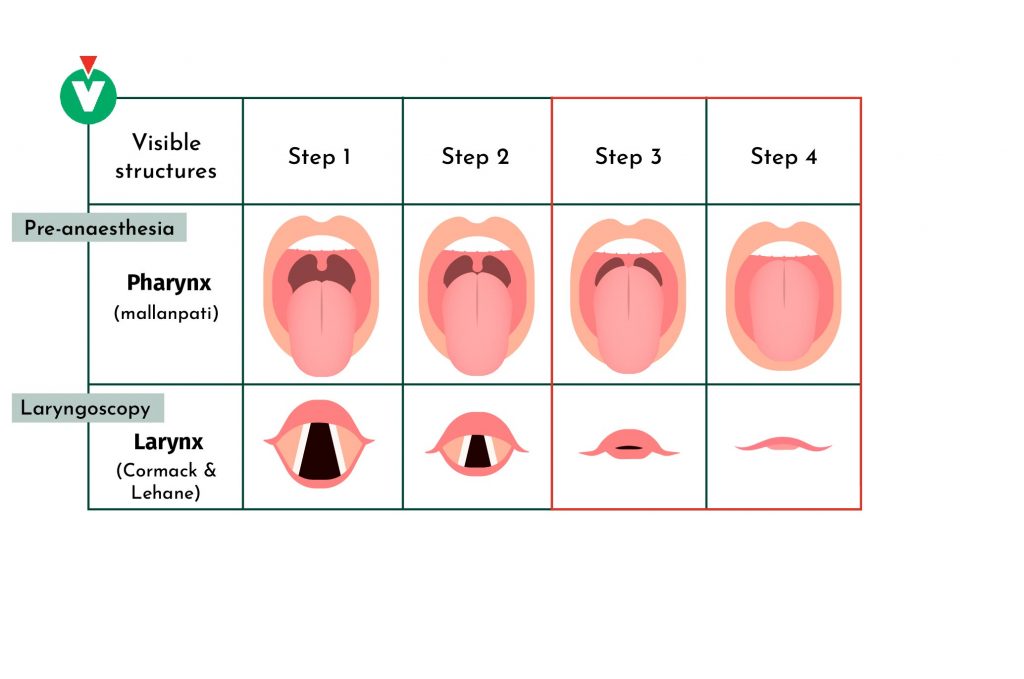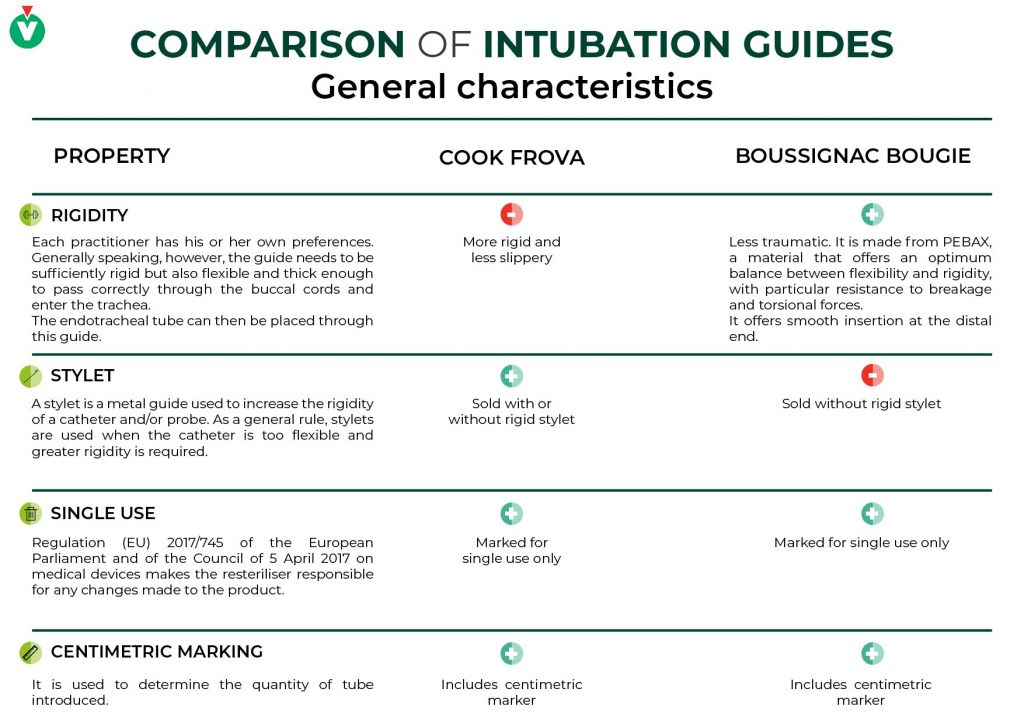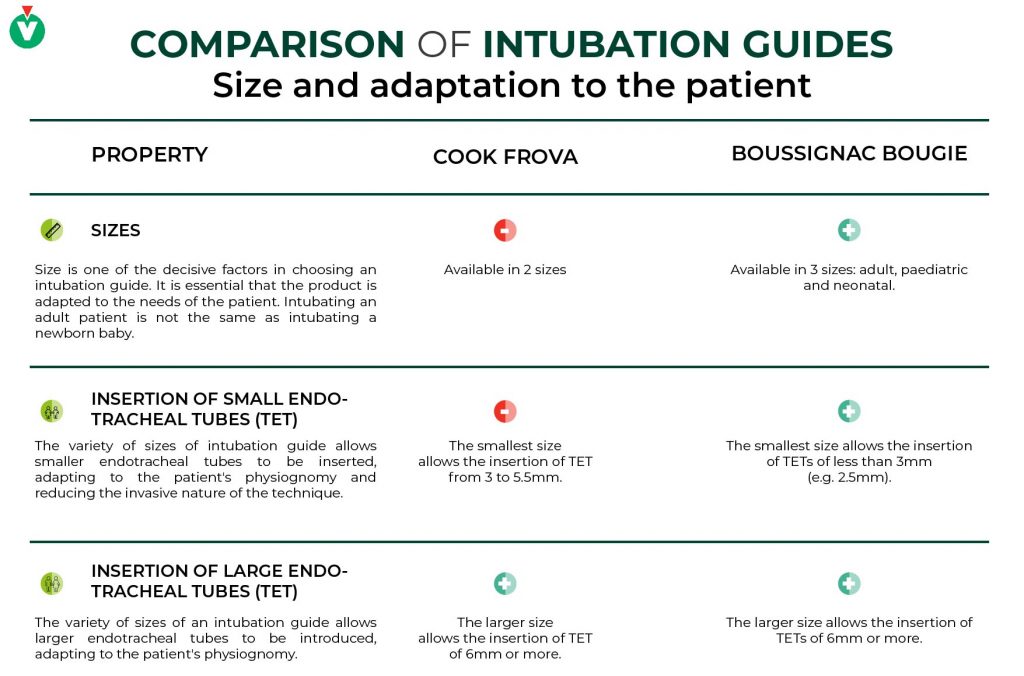Intubation is one of the most common practices for an anaesthetist.
However, when this technique is performed, the patient’s airways are often not as accessible as we would like. This is why an intubation guide is very often necessary to facilitate intubation into the endotracheal tube.
What should this guide look like?
Each practitioner has their own preferences. Generally speaking, however, the guide needs to be sufficiently rigid but also flexible and thick enough to pass successfully through the vocal cords and then enter into the trachea. In this way, the endotracheal tube can be placed through this guide.
In this article, we’ll review the properties of the Cook Frova and the Boussignac bougie. This will give us the opportunity to identify the differences between them, as well as the advantages and disadvantages of each, with the aim of making it easier for healthcare professionals to make the right choice.
HOW TO IDENTIFY A DIFFICULT AIRWAY
Intubation bougies or guides are used to open difficult airways. Without them, most intubations and the maintenance of endotracheal tubes in hospitals would be impossible.
But how to identify a difficult airway?
The Mallanpati, Cormack and Lehane scales indicate when a patient is likely to have a difficult intubation due to the opening of the pharynx and larynx respectively:

These scales are particularly important in these times of pandemic. Intubation involves a high level of exposure for healthcare professionals to the patient’s saliva droplets.
That’s why scientific societies recommend intubation strategies that encourage rapid execution on the first attempt. They suggest, for example, that intubation should be carried out by the most experienced professional and recommend the use of intubation guides.
That’s why it’s important to define a strategy to guide intubation if there is even the slightest doubt about the difficulty of the airway.
Which one to choose? It all depends on the type of patient and the characteristics you are looking for.
Comparison between Cook Frova and the Boussignac bougie

Guides are flexible, slightly deformable, cylindrical plastic devices, hollow or not, with or without a mandrel, which, thanks to their 45-degree curved end, facilitate the opening of airways that are difficult to intubate.
By oxygenating the patient, it can also be used as an exchanger. The Cook Frova and the Boussignac bougie are present in many Spanish hospitals.
These two products are very appreciated by health professionals, but what are the differences between them?
Main differences between the Cook Frova and the Boussignac bougie
The function of the Boussignac bougie and the Cook Frova is the same: to facilitate access to the difficult airway in order to achieve successful intubation.
However, the features of each of these products can help you decide which is best suited to your needs.
Let’s take a look at the differences:

Size differences between the Cook Frova and the Boussignac Bougie
Size is one of the decisive factors in the selection of one or other intubation guide, as it is essential that the product adapts to the patient’s needs. It’s not the same to intubate an adult patient as a neonatal. Let’s take a look at the size-related features of each product.

DIFFERENCES IN OPERATING MODE BETWEEN THE COOK FROVA AND THE BOUSSIGNAC BOUGIE
In conclusion, there are differences between these two products in terms of instructions for use and brand recommendations.
Here are the main differences:




